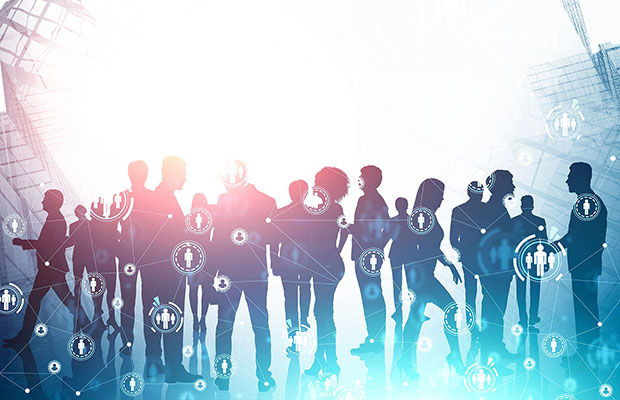In what could be a trial run for more of the same, Red Hat last week held a first-ever virtual technical summit to spread the word about its latest cloud tech offerings.
CEO Paul Cormier welcomed online viewers to the conference, which attracted more than 80,000 virtual attendees.
The company made several key announcements during the online gathering and highlighted customer innovations around Kubernetes, hybrid cloud and next-generation computing.
As a result of the COVID-19 Pandemic, numerous tech events around the world have been canceled, postponed or turned into online-only events. This year’s Red Hat Summit was the biggest yet, according to Cormier.
Cormier’s keynote focused on the history of open source, virtualization, and hybrid and cloud technologies. While all of those concepts began as ideas, they now are integrated deeply into our daily lives, he said, especially hybrid cloud.
One of his prevailing themes was the role innovation plays in the operations of tech companies. Cormier emphasized Red Hat’s pursuit of innovation in the use of hybrid technology, which he said is essential in order to scale. To that end, he detailed the growing partnerships with industry leaders including Ford Motor Company, Verizon, Intel, Microsoft and Credit Suisse.
“Hybrid requires a common development, operations, security and automation environment. This is essential in order to scale. Hybrid isn’t a trend. It’s a strategic imperative,” he said.
Innovation Is Key
Red Hat made three major announcements during a virtual panel discussion: the company’s latest OpenShift 4.4 release, Advanced Cluster Management for Kubernetes, and OpenShift virtualization. All three announcements focused primarily on hybrid cloud, which garners about 31 percent of Red Hat’s customer base.
OpenShift 4.4 is the latest release of Red Hat’s enterprise Kubernetes platform. Based on Kubernetes 1.17, it features a developer-focused view of platform metrics and monitoring for application workloads. It also provides monitoring integration for Red Hat operators along with cost management for financial planning associated with specific applications in the hybrid cloud.
OpenShift 4.4 brings new capabilities that include pipeline support, new infrastructure functionality on HAProxy and DNS, and improved developer experience use cases, according to Matt Hicks, executive vice president of product and technologies at Red Hat. The new features enable serverless use, and the general path and foundation Red Hat is building on with Linux and Kubernetes.
Red Hat announced its Advanced Cluster Management platform for Kubernetes to make it easier to run cloud-native applications at a large scale. The platform enables organizations to manage their Kubernetes clusters with consistency across the hybrid cloud. It works with Red Hat OpenShift deployed on-premises, on bare metal, and on major public cloud providers to native clusters from Amazon Web Services, Google Cloud Platform, IBM Cloud and Microsoft Azure.
Red Hat’s third opening day announcement was the availability of OpenShift virtualization — a new feature built from the KubeVirt community project.
The virtualization feature enables IT organizations to bring standard VM-based workloads to Kubernetes, helping eliminate the workflow and development silos that typically exist between traditional and cloud-native application stacks, explained Joe Fernandes, Red Hat’s vice president for products, in the cloud platforms business unit.
OpenShift virtualization makes it easier to migrate and modernize existing applications and services on the industry’s most comprehensive enterprise Kubernetes platform, he added.
Broader Demographic Reached
Moving the event from physical to virtual was a success, said Leigh Day, vice president for marketing communications and brand at Red Hat. It allowed event organizers to reach a much broader demographic than ever before.
“By the end of the event, we had more than 82,000 people registered and 56,000 attendees,” she told TechNewsWorld. Without the usual travel costs and time constraints, the conference opened up a lot of opportunities for creative interaction between attendees and Red Hatters from around the globe.
The virtual event also drew more customers and partners to viewing sessions than ever before because there were no physical space limitations. Furthermore, with an increase in attendees, Red Hat was able to gather more feedback so it can build even stronger events in the future, Day noted.
Door-Opening Feat
To say that the virtual summit was a huge success could be an understatement. Turning a physical event with an expected 10,000 attendees to a virtual event in less than two months was not easy, said Day.
“The engagement within the environment has to be one of the most notable successes of the Red Hat Virtual Summit 2020,” she said.
The virtual event had more than 64,000 unique visitors to the “Ask the Expert” and “Chat” sessions. It drew 118,000 unique total views to the General Sessions and more than 322,000 unique visitors to all the session content.
“One really unique thing we did was running virtual labs,” noted Day. “This is something that has never been done before, and we were able to deploy more than 1,500 labs for customers successfully.”
Good Overtook Bad
With any big event, you are going to expect to see some hiccups. Red Hat’s first virtual conference was not the exception.
The problems ranged from speakers going over their allotted time to Internet outages in attendees’ homes. Still, most of the glitches were minor, and the event staff was ready to handle them, Day said.
The bottom line is that Red Hat is not rejecting the notion of holding more virtual events.
“This will open the door for more hands-on experiences to be offered more broadly,” Day said.
Announcement Summaries
During the second day of the summit conferences, Red Hat provided details about its ongoing developments in the fields of artificial intelligence and machine learning, the course of the changing data center, the open hybrid cloud, and the importance of edge computing. The running theme reinforced Red Hat’s belief in the role open source technologies and the communities behind them play in driving new innovations.
The role of data in our lives is evolving rapidly to fit the unique challenges tech companies face today, noted Chris Wright, Red Hat’s chief technology officer. The amount of amassed data has resulted in rapid changes to the concept of the data center.
Managing the cost and complexity of this new architecture at scale is a challenge for any business. It is not just about the quantity of data, but the quality of information derived from it, he said. Red Hat believes an open hybrid cloud is the best way to handle all this data into the future.
Similarly, edge computing is vital to delivering the compute and data-intensive parts of the rendering pipeline offloaded to the cloud. To that end, Red Hat is working with the open source community, customers and partners to help organizations looking to accelerate their edge computing strategies.
The company also has been working closely with members of its Open Data Hub community in developing a blueprint for building an AI as a Service platform on OpenShift and Red Hat Ceph Storage.
Beyond ‘Upstream First’
Perhaps one of the most significant announcements from Red Hat involved its heightened efforts to go beyond “upstream first” performance. An open hybrid cloud can meet the needs to bring operational models of a cloud. However, no upstream equivalent currently exists for operations.
Red Had introduced the Operate First program to assist open source communities and its own cloud products with building operational knowledge directly into software. It hopes to leverage tools such as Ansible and the Operator SDK to glean insights into operational needs as a part of the software development cycle.
“When we operate first, we share operational knowledge, which can be as important as the code itself,” said Wright.
Also, Red Hat last week announced that Vodafone Idea Limited won the Innovator of the Year award. Vodafone Idea builds a Universal Network Cloud that reduces deployment times. Red Hat also announced other 2020 Red Hat Innovation Awards winners: BMW Group, Edenor, Ford and the Argentine Ministry of Health and Social Development.
Unproven Path
It is not yet a given how the tech industry in general will respond with future conferences. The actual effectiveness of virtual gatherings is still an uncharted course, suggested Rob Enderle, principal analyst at the Enderle Group.
In order of effectiveness, tech conferences have three primary values:
- They develop personal networks that are helpful with projects and careers.
- They allow sales to initiate and close deals.
- They convey information on products, services, and capabilities for both the companies that hold them and the companies that showcase at them.
“Virtual conferences, so far, don’t help with personal networks. Nor are they good at closing sales, but they can be used to generate leads,” Enderle told TechNewsWorld.
Conferences also convey information well if the presentations can attract and hold an audience. That result depends a lot on the presenters’ execution.
“The majority of folks don’t know how to do virtual conferences well,” Enderle noted.
Unless conference organizers can find a better way to meet all three critical requirements, the tech industry will go back to physical conferences once it is safe to do so, he predicted. That gives the industry around a year and a half to fix virtual conferences.
“Now, given we have no choice at the moment, there is a reasonably good chance someone may figure out how to do this right by the time the mandatory aspect of these things expires,” Enderle concluded.
What’s Next for Red Hat?
At this point, company officials do not want to make any predictions for next year. It is still too early to say.
However, Red Hat is considering how to leverage what officials learned from this experience to make 2021 even better, Day said. The future could bring a hybrid sort of model that combines digital components with in-person events and meetings.
“We know that face-to-face interaction is still so important for customer and partner engagement,” said Day. “But we are also learning a lot about the appetite for content and the desire for connection from an expanded global audience. We will want to continue expanding on that in the future.”
























































